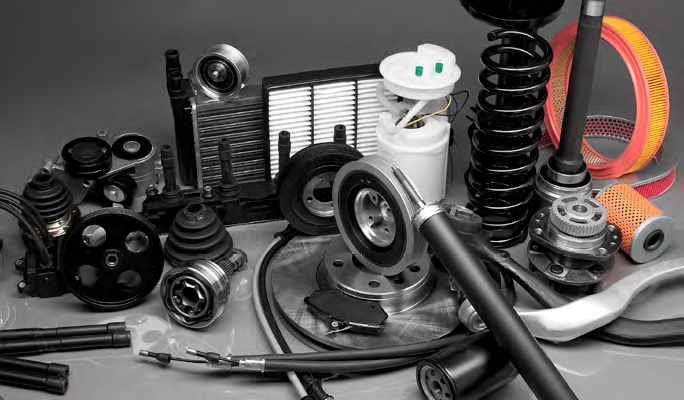From Parts Unknown
Covid and its various impacts, supply chain shortages and production disruptions haven’t just affected the automotive industry, auto parts have been affected as well.
By Carter Hammett
Earlier this year the automotive industry held its collective breath as the blockade near the Ambassador Bridge at the Windsor-Detroit border crossing essentially shut down all movement, of goods between Canada and the U.S.
Folks had good reason to utter that gasp: over $300 million in trade flows over the Ambassador Bridge daily, and $100 million of that is for the automotive industry.
The blockades were just the latest setback for an industry still reeling from COVID, followed by supply chain shortages. The overall damage included layoffs by the hundreds as well as months-long wait times for cars and unprecedented price increases even for used vehicles.
The biggest culprit of course, was the crippling shortage of microprocessors, used to control everything from infotainment systems to power trains to digital safety systems. Most vehicles use up to 100+ microchips, which makes lack of access to them particularly disruptive. Following pandemic cuts, automotive manufacturers had to take a back seat to the strong demand for webcams, smart phones, TVs and other electronics from consumers during Covid lockdowns.
But it’s not just microprocessors that are in short supply. The problem has spread to plastics and even foam as the industry struggles to right itself.
“Supply chain issues have affected the industry and consumers in all channels,” says Jean-Francois Champagne, president of the Automotive Industries Association of Canada (AIA), which unites the entire automotive aftermarket supply and service chain under one umbrella.
“Our membership extends to more than 4,000 member locations across Canada employing professionals dedicated to providing quality parts and products as well as vehicle service and repairs to the country’s fleet of almost 26 million vehicles,” Champagne says.
And since both new and used cars are in short supply or priced out of many consumer hands, computer-savvy customers have been turning to online parts suppliers like NAPA, ebay and Amazon looking for auto parts to extend the life of their vehicles as they anxiously wait for the finished product to arrive.
AIA has conducted research into this topic and learned that Canadians most often look for the following components, which include motor oil, tires, wiper blades, windshield washer fluid and brake pads.
Parts that continue to remain in short supply include ABS brake modules, engine sensors, windshields and transmission control modules.
Pundits across various industry sectors anticipate the problem will last into next year. Fortunately the federal government has already started funnelling monies into the semiconductor sector, which is anticipated to be up and running before long. Along with various other initiatives, including funding for electric vehicles and reframing the use of some Ontario automotive manufacturers and the industry is slowly but steadily righting itself. Consumer spending habits and behaviours have been altered, however.
“Consumers will continue to buy online creating an expectation on the part of automotive service providers to install these parts, creating challenges in the area of proper parts and warranty,” says Champagne.
That’s yet another change the industry will have to respond to, but for now, it looks as if Canada’s parts sector is slowly moving towards a healthy, pre-pandemic equilibrium.


